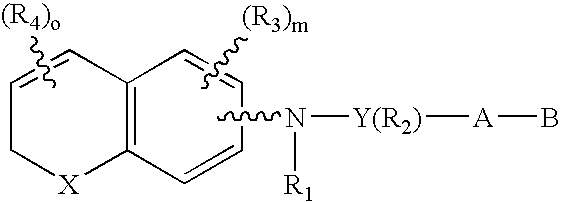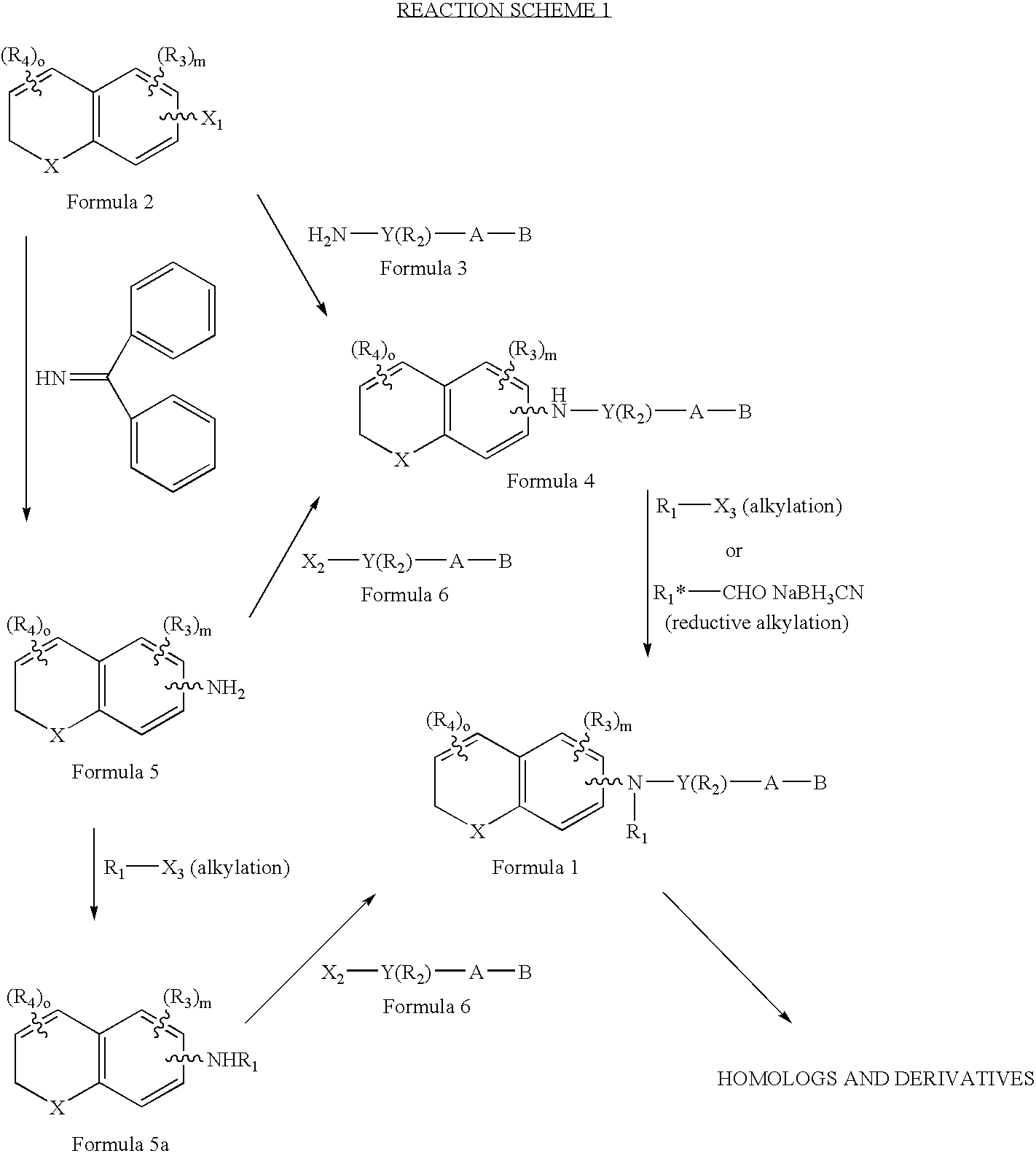Amines substituted with a dihydronaphthalenyl, chromenyl, or thiochromenyl group, a pyridyl group and an alkyl group, having retinoid-like biological activity
- Summary
- Abstract
- Description
- Claims
- Application Information
AI Technical Summary
Benefits of technology
Problems solved by technology
Method used
Image
Examples
specific embodiments
[0071]The preferred compounds of the invention are dihydronaphthalene derivatives
(X=C(R)2)
and R is preferably methyl. With reference to the symbol Y in Formula 1 the preferred compounds of the invention are those where Y is phenyl, naphthyl, pyridyl, thienyl or furyl. Even more preferred are compounds where Y is phenyl or pyridyl. As far as substitutions on the Y (phenyl) and Y (pyridyl) groups are concerned, compounds are preferred where the phenyl group is 1,4 (para) substituted and where the pyridine ring is 2,5 substituted. (Substitution in the 2,5 positions in the “pyridine” nomenclature corresponds to substitution in the 6-position in the “nicotinic acid” nomenclature.) In the presently preferred compounds of the invention there is no R2 substituent (other than hydrogen) on the Y group. When there is an R2 substituent it is preferably lower alkyl or halogen.
[0072]The A-B group of the preferred compounds is (CH2)qCOOH or (CH2)q—COOR8, where R8 is defined as above. Even more pr...
specific examples
4-(4-Methoxy-3-methylphenyl)-4-oxobutyric acid (Compound 2)
[0086]To a solution of succinic anhydride (12.0 g, 122.0 mmol) and 50 mL of 1,1,2,2,-tetrachloroethane at room temperature was added AlCl3 (21.5 g, 161.2 mmol) and 2-methylanisole (Compound 1, 10 mL, 81.0 mmol). The resulting solution was stirred for 4 h at room temperature, then poured into a solution of concentrated HCl (20 mL) in water (50 mL) and ice. Dichloromethane was added, and the bottom layer was separated. The solvents were removed under reduced pressure, and the residue was dissolved in a boiling solution of sodium carbonate (30 g Na2CO3 in 160 mL H2O) for 10 min, and filtered. The filtrate was acidified with concentrated HCl to pH=0-1, and crystallized in a salt ice bath. The solid product was filtered and washed with cold water, and dried in the air to give 13.7 g (76%) of the title compound as an off-white solid.
PNMR (300 MHz, CDCl3) δ 2.25 (s, 3 H), 2.82 (t, 2 H, J=7.5 Hz), 3.28 (t, 2 H, J=7.5 Hz), 3.89 (s, 3...
PUM
| Property | Measurement | Unit |
|---|---|---|
| Molar density | aaaaa | aaaaa |
| Molar density | aaaaa | aaaaa |
| Molar density | aaaaa | aaaaa |
Abstract
Description
Claims
Application Information
 Login to View More
Login to View More - R&D
- Intellectual Property
- Life Sciences
- Materials
- Tech Scout
- Unparalleled Data Quality
- Higher Quality Content
- 60% Fewer Hallucinations
Browse by: Latest US Patents, China's latest patents, Technical Efficacy Thesaurus, Application Domain, Technology Topic, Popular Technical Reports.
© 2025 PatSnap. All rights reserved.Legal|Privacy policy|Modern Slavery Act Transparency Statement|Sitemap|About US| Contact US: help@patsnap.com



